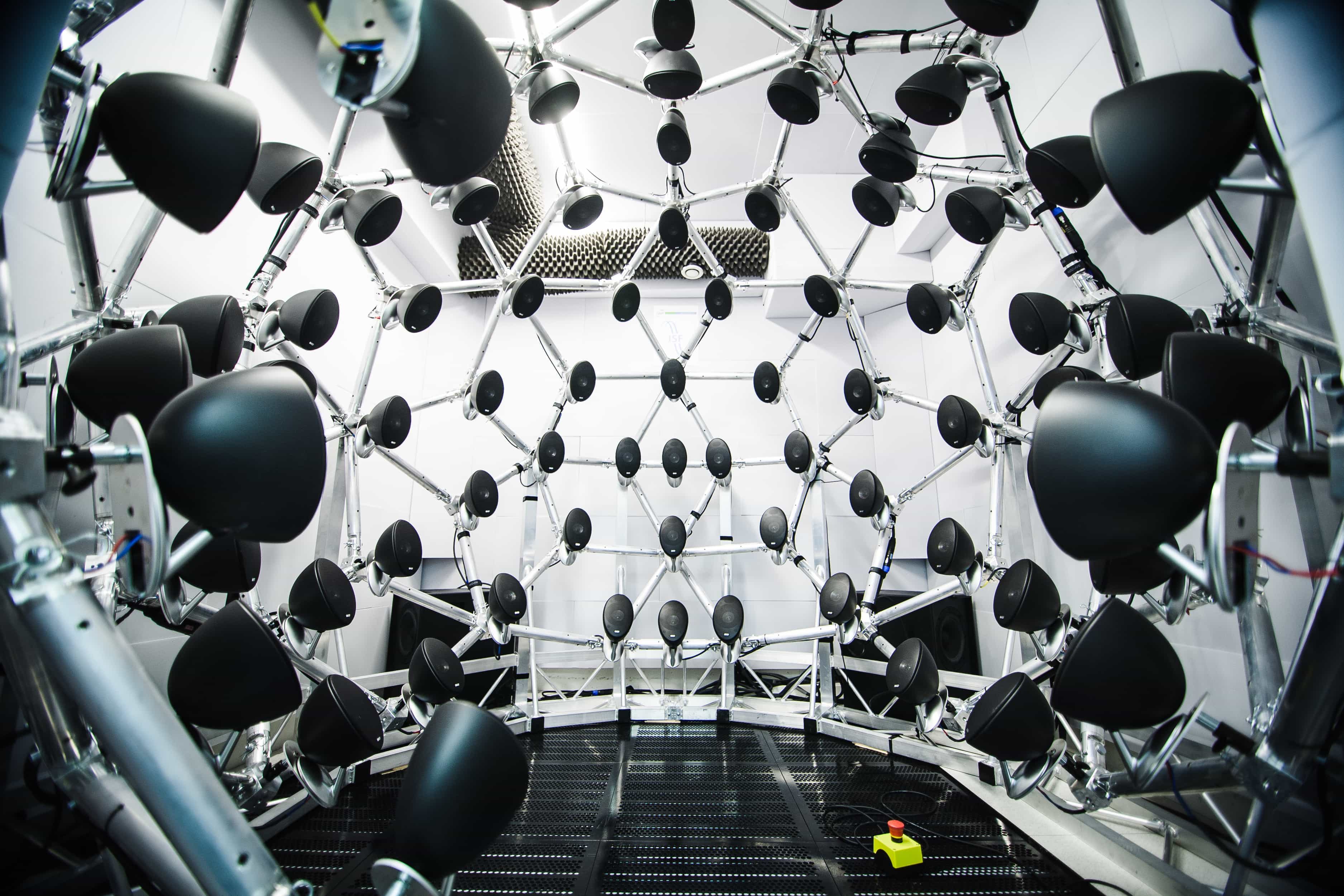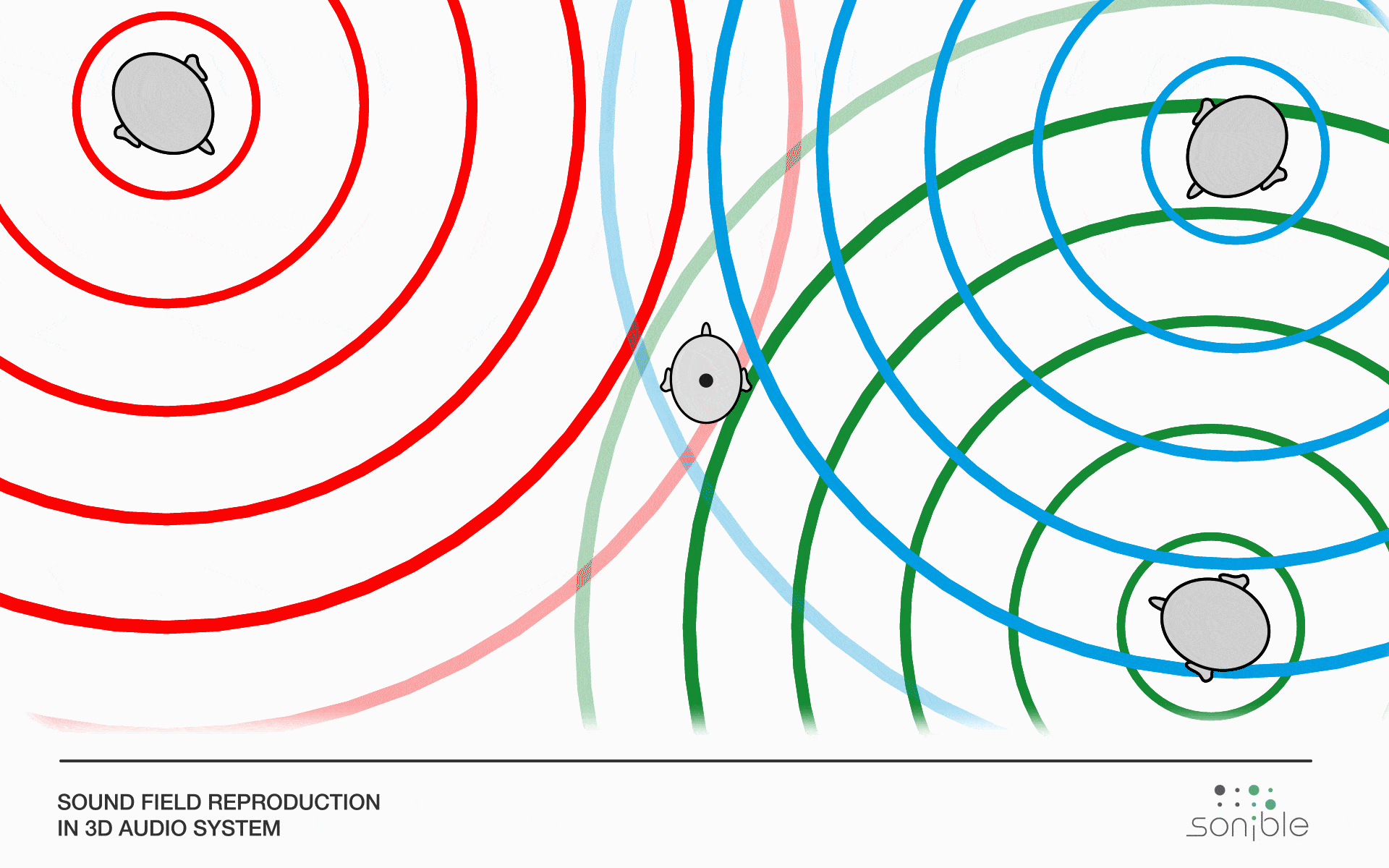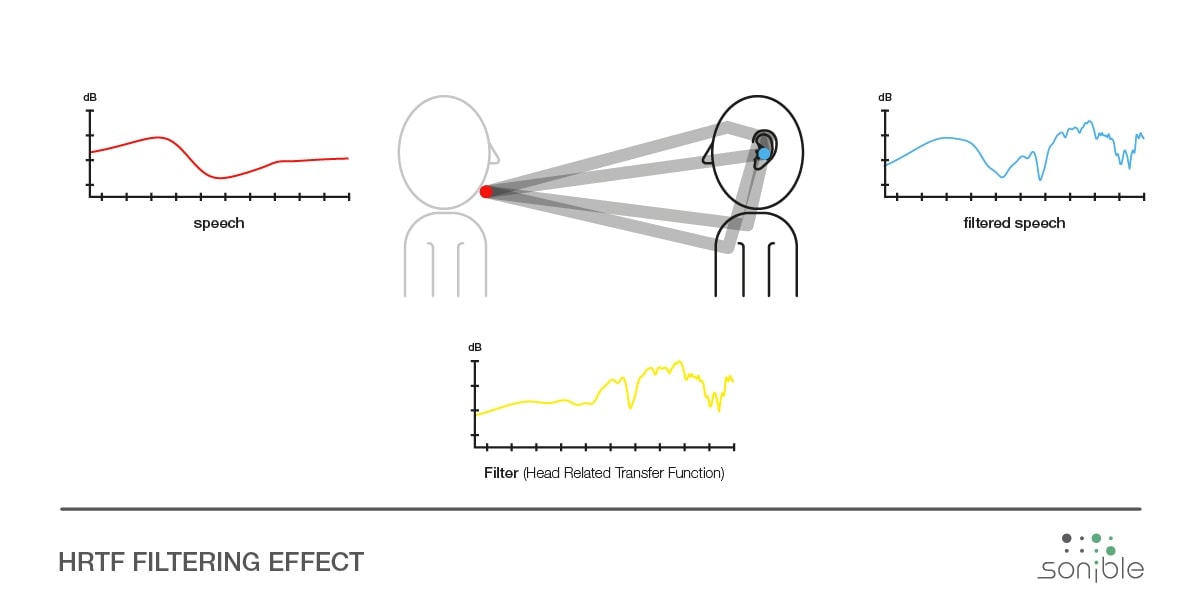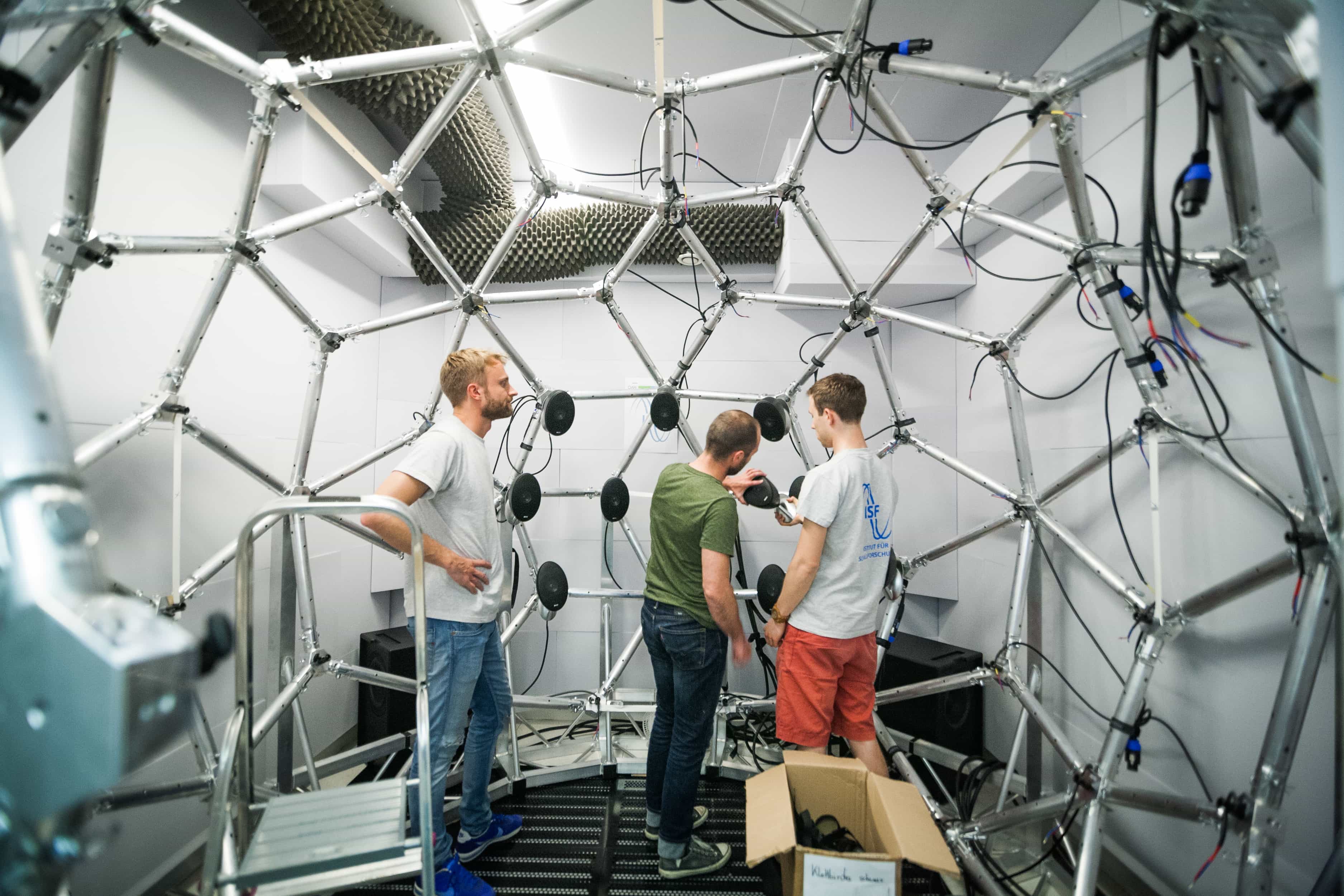Cochlear implants rank amongst the major achievements in the field of hearing prostheses. The Acoustic Research Institute Vienna (ARI) is a pioneer in fundamental research in this area. To aid ARI in their research, sonible has planned and installed a compact 3D audio system commissioned by them.
Follow the link for a detailed Case Study of the project:
Case Study | Compact 3D Audio Research Lab

Research on perception in human hearing encounters obstacles when it comes to everyday situations. It is difficult to reproduce realistic auditory scenes in a laboratory and field research introduces uncontrollable sources of error. 3D audio systems can help. By using modern 3D audio playback techniques like Higher Order Ambisonics (HOA) or Vector Based Amplitude Panning (VBAP), it is possible to simulate acoustic scenes in the audio laboratory.

Therefore the ARI Vienna commissioned sonible to plan and implement a hemispheric 3D audio system. To meet their complex research criteria, sonible installed a total of 92 discretely controllable, coaxial loudspeakers in a room measuring approximately 3.2 meters in depth. In addition a compact amplification system using only four d:24mio units in a 12 RU rackspace helps to ensure the mobility of the system.
The small dimensions of the room have concrete advantages. Due to the high density of the loudspeakers, it is possible to play back signals with extremely high spatial precision. Realistic simulation of acoustic environments such as a forest, road junction or concert environment are possible.
One aspect of the research at the ARI is intensely focused on directional listening – in particular the work of Vice Director Piotr Majdak, who is jointly responsible for the implementation of the new 3D audio system. Human hearing creates acoustic maps of the surrounding environment. This happens all the time and for the most part subconsciously. We can consciously concentrate on specific sound events, as is the case in the cocktail party effect. By doing so, our hearing helps us to navigate more accurately through street traffic, for example, by providing us with the necessary information about the exact location and direction of potential hazards.

So-called Head Related Transfer Functions (HRTFs) are essential to our perception. HRTFs describe how incoming sound events from different directions are influenced by the acoustic reflections created by our shoulders, head and auricle- that is, how they are filtered by these reflected sounds. The derived filter curves give us an overview, among other parameters, of the position of a particular sound source.
This ability to accurately locate a sound source is not, however, available to everyone. Locating sound events on the sagittal plan (front / back) is particularly difficult for people with cochlear implants. This can be an enormous source of danger for children with hearing impairments while on their way to school. For this reason alone, it is important to continue the research on improving cochlear implants.

Although the ARI does not develop cochlear implants, their research has laid important scientific foundations towards solving these psychoacoustic problems of spatial hearing: “Everything we’re researching here needs ten to twenty years before it arrives at the consumer,” said Piotr Majdak.